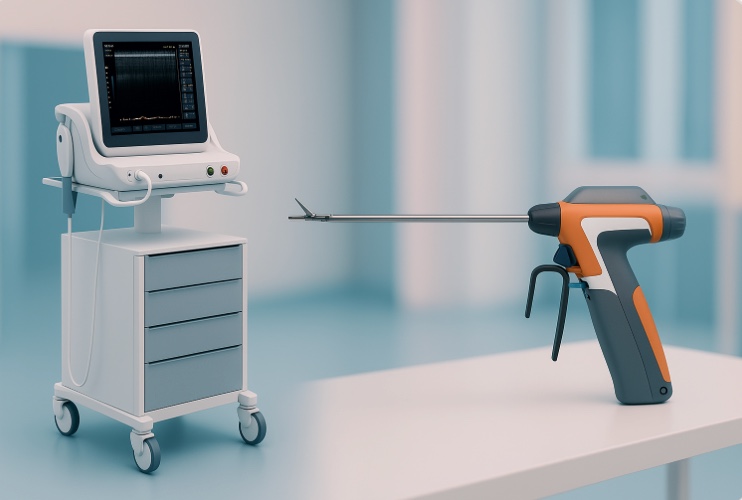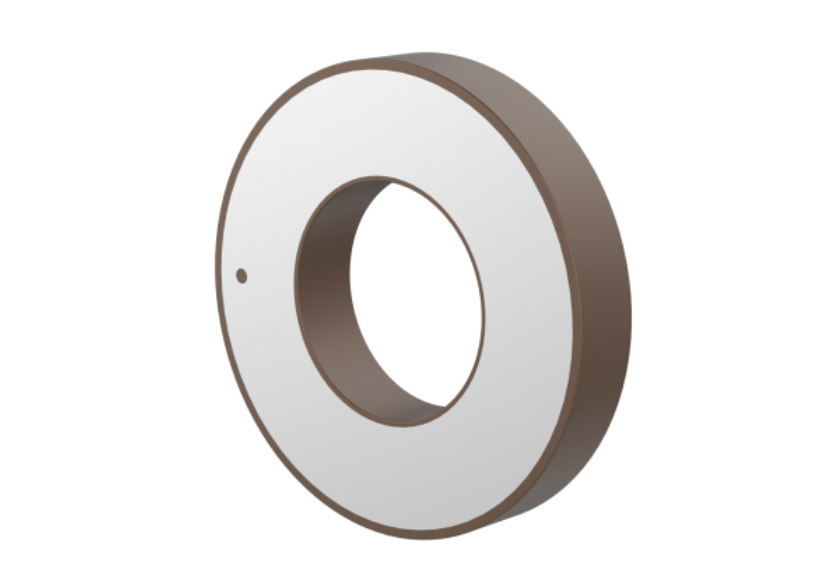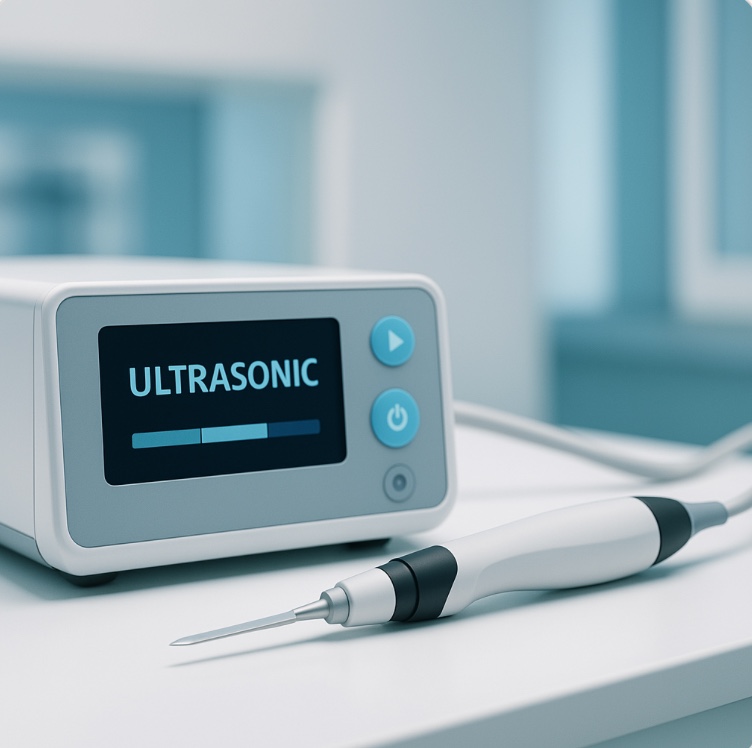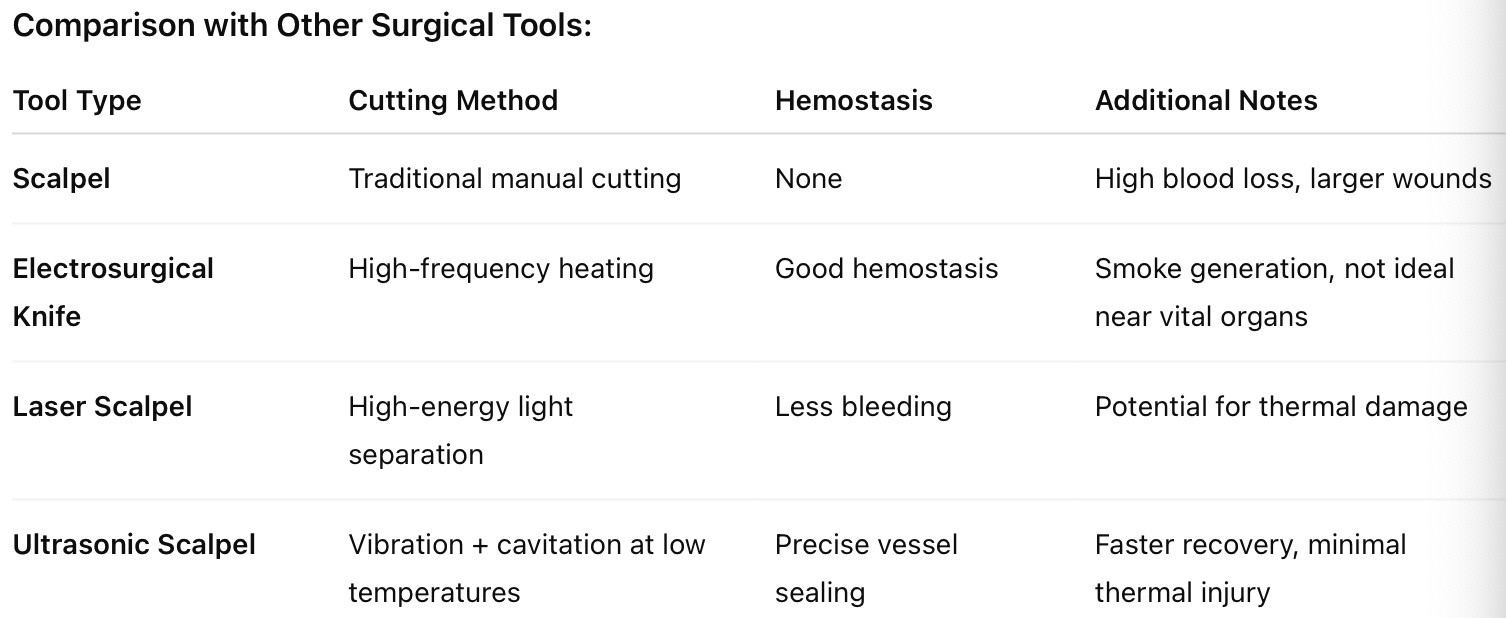


With continuous advancements in medical technology and growing demand for safer and more precise surgical tools, ultrasonic scalpels are gaining traction in modern operating rooms.

What is an Ultrasonic Scalpel?
Also known as an ultrasonic cutting and coagulation device, it utilizes high-frequency mechanical vibrations and cavitation effects to cut tissue and seal blood vessels simultaneously. Compared with traditional scalpels, ultrasonic scalpels cause less bleeding, minimal heat damage, and enable faster recovery—earning them the name "bloodless scalpel."

How Does It Work?
The system delivers electric energy from the main unit to the handpiece, where a piezoelectric ceramic element converts it into high-frequency mechanical vibrations. These vibrations travel through the shaft and concentrate at the blade tip. Upon contact with tissue proteins, the vibrations break hydrogen bonds, promote protein coagulation, and effectively seal vessels while minimizing trauma to surrounding areas. The Role of Piezoelectric Ceramic Transducers.

An ultrasonic scalpel system includes a host unit, blade, foot control, frame, and handpiece. The piezoelectric ceramic transducer, housed within the handpiece, is the key component that transforms electric power into mechanical energy.

ADW Piezoelectric Transducer for Ultrasonic Scalpels
Our proprietary transducer, designed specifically for ultrasonic surgical applications, features high amplitude, excellent reliability, and stable performance. It lays a solid hardware foundation for more precise control and safer operations in advanced surgical systems.
